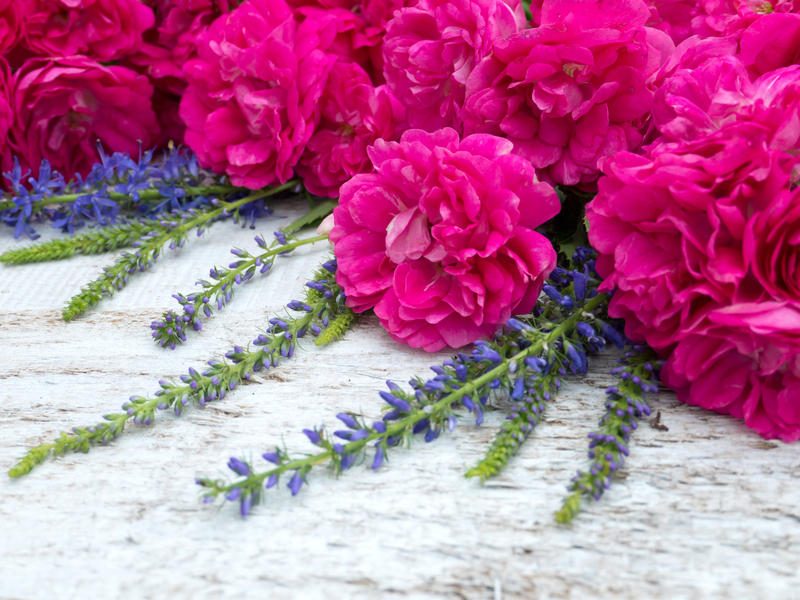Growing Blueberries: A Simple Guide
Posted on 02/02/2025
Blueberries are not only delicious but also packed with nutrients, making them a favorite among both gardeners and health enthusiasts. Growing your own blueberries can be a rewarding experience, providing you with fresh, organic fruits right from your garden. In this comprehensive guide, we will explore everything you need to know about growing blueberries, from choosing the right variety to harvesting and caring for your plants.
Choosing the Right Blueberry Variety
One of the first steps in growing blueberries is selecting the appropriate variety for your location and climate. Blueberries generally fall into three main categories: highbush, rabbiteye, and lowbush.
- Highbush Blueberries: These are the most common type and are typically grown in regions with cold winters. They are further divided into northern and southern highbush varieties. Northern highbush blueberries are ideal for cooler climates, whereas southern highbush blueberries can tolerate warmer regions.
- Rabbiteye Blueberries: Native to the southeastern United States, rabbiteye blueberries thrive in hot, humid climates. They are known for their high yield and extended harvest season.
- Lowbush Blueberries: These are wild blueberries that grow close to the ground and are suited for colder climates. They are often used in commercial production for their small, intensely flavored berries.

Preparing the Soil
Blueberries require well-drained, acidic soil with a pH between 4.5 and 5.5. If your soil is not naturally acidic, you can amend it by adding elemental sulfur or peat moss. It's essential to test your soil's pH before planting and adjust accordingly. Blueberries also prefer soil rich in organic matter, so incorporating compost or well-rotted manure can be beneficial.
Planting Blueberries
Blueberries are best planted in the early spring or fall when the weather is cool. Follow these steps to ensure successful planting:
- Select a Sunny Spot: Blueberries need full sun to produce the best fruit. Choose a location that receives at least 6-8 hours of direct sunlight per day.
- Dig the Holes: Space the plants about 4-6 feet apart for highbush varieties and 6-8 feet apart for rabbiteye varieties. The holes should be twice as wide and just as deep as the root ball.
- Prepare the Root Ball: Gently loosen the roots of the blueberry plant before placing it in the hole. This encourages better root growth and establishment.
- Plant and Water: Place the plant in the hole, ensuring that the top of the root ball is level with the soil surface. Backfill with soil and water thoroughly.
- Mulch: Apply a 2-4 inch layer of mulch around the base of the plant to help retain moisture, suppress weeds, and maintain soil temperature.
Watering and Fertilizing
Consistent watering is crucial for blueberry plants, especially during the first few years as they establish their root system. Blueberries require about 1-2 inches of water per week. It's best to water deeply and infrequently rather than shallowly and frequently. Mulching can help retain soil moisture and reduce the need for frequent watering.
Blueberries benefit from regular feeding, but over-fertilization can harm the plants. Use a fertilizer specifically designed for acid-loving plants, and follow the manufacturer's instructions. Generally, it's best to apply fertilizer in the early spring, just as new growth begins, and again after harvest.
Pruning and Training
Pruning is essential for maintaining the health and productivity of your blueberry plants. It helps to remove dead or diseased wood, encourages new growth, and improves air circulation. Here are some pruning tips:
- Remove Dead Wood: In late winter or early spring, before new growth begins, remove any dead, damaged, or diseased branches.
- Thin Out Older Canes: For mature plants, remove some of the older canes to encourage the growth of new shoots. Aim to keep 6-8 healthy canes per plant at different stages of maturity.
- Tip-Prune Young Shoots: To encourage bushier growth, tip-prune young shoots by cutting off the top few inches.
Pest and Disease Management
Blueberries are relatively pest-resistant, but they can still be affected by some common pests and diseases. Here are some preventive measures and treatments:
- Birds: Birds are one of the biggest threats to blueberry crops. Use netting to protect your plants or consider installing bird deterrents.
- Insects: Common insect pests include aphids, blueberry maggots, and spider mites. Monitor your plants regularly and use organic insecticides if necessary.
- Diseases: Fungal diseases like powdery mildew and botrytis can affect blueberries. Ensure good air circulation by proper spacing and pruning, and treat with fungicides if needed.
Harvesting Blueberries
Harvesting blueberries is an exciting time for any gardener. Here are some tips to help you make the most of your harvest:
- Wait for Full Ripeness: Blueberries do not continue to ripen after being picked. Wait until they are fully ripe and have a uniform blue color.
- Harvest Gently: Blueberries are delicate and can be easily damaged. Use gentle hands when picking to avoid bruising the fruit.
- Regular Harvesting: Blueberries ripen over a period of several weeks. Check your plants regularly and pick berries as they ripen to ensure a continuous harvest.

Storing and Using Blueberries
After harvesting, blueberries can be stored in the refrigerator for up to two weeks. For longer-term storage, consider freezing them. Simply spread the berries on a baking sheet and freeze until solid, then transfer to an airtight container. Frozen blueberries can be used in smoothies, baking, or as a snack.
Blueberries are incredibly versatile and can be enjoyed in various ways. They are perfect for making jams, jellies, pies, muffins, and more. Additionally, they can be added to cereals, yogurt, or salads for a nutritious boost.
Conclusion
Growing blueberries can be a rewarding and enjoyable experience, providing you with an abundant supply of fresh, healthy berries. By selecting the right variety, preparing the soil, and following proper planting and care techniques, you can successfully cultivate blueberries in your garden. Whether you're an experienced gardener or a beginner, these tips will help you achieve a bountiful harvest and enjoy the delicious taste of homegrown blueberries.




